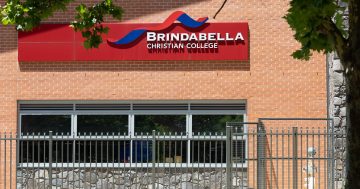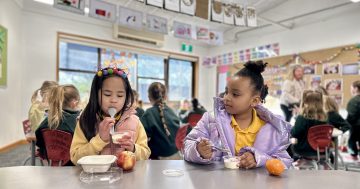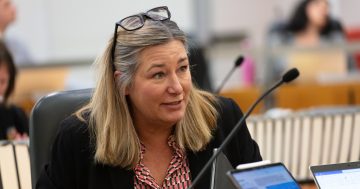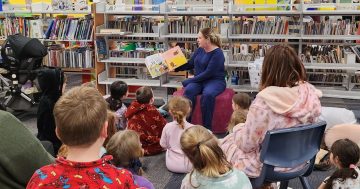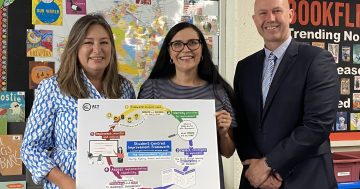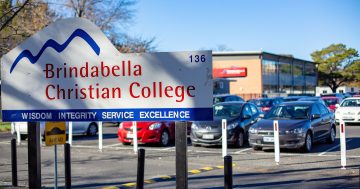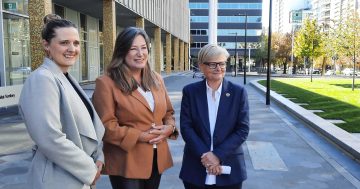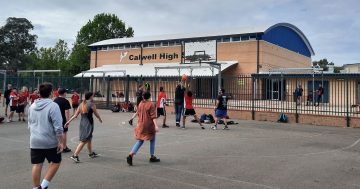
Education Minister Yvette Berry has announced the Territory’s COVID-safe back to school plans for term one. Photo: Dominic Giannini.
Students across the Territory will return to on-campus learning as scheduled for the beginning of the new school year on 31 January and 1 February, the ACT Government has confirmed today.
Similar to announcements made in NSW and Victoria in recent days, the government says rapid antigen tests, masks, increased ventilation, high levels of vaccination rates, and cohorting students will all play a significant role in the Territory’s COVID-safe return to school.
Education Minister Yvette Berry said she acknowledged that given the current level of community transmission, “we will see COVID-19 cases in our schools”.
“Comprehensive prevention, risk mitigation and response strategies have been developed and refined to enable our schools to both avoid and manage cases as they arise and, where possible, avoid closures,” she said.
Two rapid antigen tests per week for the first four weeks of term will be distributed to students and teachers across all school settings, including independent and Catholic schools.
A total of 206,600 rapid antigen tests will be distributed to schools and early childhood facilities during the first week of term one and will be available for collection by the week’s end at the latest, authorities said today (24 January).
While using these tests for surveillance is not compulsory, parents may be directed to use them if there is a COVID-19 exposure at the school, ACT Education Directorate Deputy Director-General Jane Simmons explained.
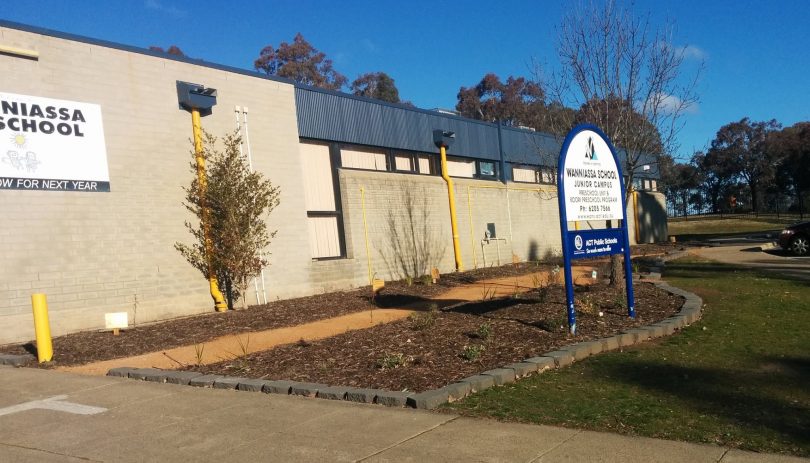
A cluster related to Wanniassa School – Junior Campus grew to over 50 cases last year. Photo: Wanniassa School – Junior Campus.
Keeping schools open once they are return is a major focus for health and education authorities.
In line with this, and similar to arrangements in place in NSW and Victoria, students and teachers won’t be classified as close contacts in the instance of a positive case on campus. That means they won’t be required to quarantine if they come into contact with COVID-19 at school, although there may be instances where a negative test result (RAT or PCR) is required before students can return to school.
“If a student tests negative and has no symptoms, they can return to school the next day,” Ms Simmons said.
There may be situations in which an ‘outbreak’ situation on campus may need to be managed by closing the school and switching to remote operations for a short period of time, authorities say.
“Parents will be required to notify the school if their child tests positive to COVID-19 so the information can be shared with anyone affected,” Ms Simmons said.
During term four last year, the operations of more than 30 ACT schools were hampered by the effects of a positive COVID-19 case on campus which put cohorts of students in quarantine and, in some cases, returned entire schools to remote learning.
At that time there was no vaccine available for school-aged children between the ages of 5 and 11, and even with a vaccine now available, none of this cohort will be fully vaccinated before they return to school due to the interval between doses.
However, it’s expected that 90 per cent of children will have received at least one dose of the vaccine before returning to school.
Mandatory vaccination requirements for staff in early childhood and primary school settings will remain until the conclusion of the public health emergency. The ACT Government has prioritised booster doses for all teachers, educators, and education staff ahead of the return to school.
Concerns about staff shortages due to COVID-19 cases prompted authorities in NSW to create a “pool” of possible staff such as retired teachers and final year teaching students who can step in if required.
But Ms Simmons said the ACT has instead devised a “variety” of strategies to cope with potential shortages, such as combining classes, using relief teachers, limiting and cancelling some non-essential activities, or providing supervision only.
As well as overarching guidelines, every school is also expected to have its own individual COVID-19 safety plan in place. These will be shared with school communities in the coming days.
Many of last year’s settings will carry over into the new school year, including mandatory mask-wearing for adults, visitors and students in years 7 to 12; staggered timetables; increased cleaning and ventilation; outdoor learning and cohorting.
Excursions and visitors will largely not be allowed, nor will whole school activities such as assemblies, although there are some exemptions.
Students who are immuno-compromised or at high risk and unable to attend face-to-face learning will be supported to learn from home.












